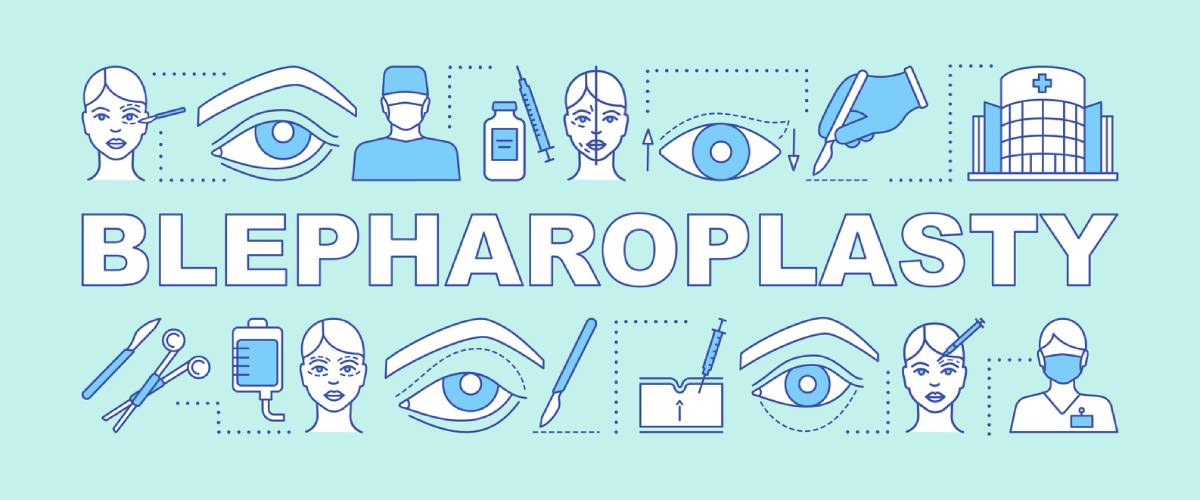Blepharoplasty, otherwise known as eyelid surgery, is a popular cosmetic procedure that patients undergo for different reasons. Some patients want to restore a youthful look, some want to improve their vision, and some want to achieve both. Regardless of the reason for undergoing it, this delicate oculoplastic surgery can make a significant impact on a person’s appearance and confidence. If you are considering eyelid surgery, understanding how the procedure is done can help ease your anxiety and prepare you for what you should expect. So, how is blepharoplasty performed? This article will serve as your guide that will take you through the step-by-step process from the initial consultation to recovery.
What Is Blepharoplasty?
As people age, the skin around the eyes can sag or droop. Fatty deposits may also cause puffiness and bags under the eyes. Sometimes, the sagging around the eyes can significantly affect peripheral vision. To address one or both of these problems, patients may opt for blepharoplasty.
It is a surgical procedure that is designed to remove excess skin, fat, and sometimes muscle from the upper and/or lower eyelid.
How Is Blepharoplasty Performed?
Step 1: Consultation
Search for a qualified board-certified surgeon or oculoplastic surgeon and schedule a consultation. During this consultation, discuss your goals as honestly as possible. Tell the surgeon about your medical history and ask about your suitability for surgery.
During this consultation, the surgeon may:
- Examine your eyelids
- Take photographs for medical records
- Discuss expectations and potential results
- Review any medical conditions, medications, or allergies
If your goal is to improve your eyesight, you may also undergo vision examination, including peripheral vision testing.
Step 2: Pre-Operative Preparation
If and when you decide to proceed with the surgery, your surgeon may give you pre-operative instructions, which may include the following:
- Avoiding aspirin, ibuprofen, vitamin E, or any other medications and supplements that may increase bleeding
- Quitting smoking several weeks before the scheduled procedure because smoking can affect or delay healing.
- Arrange for a close friend or family member to drive you home after the procedure and assist you while you are recovering.
Step 3: The Day of Surgery
This procedure is usually done on an outpatient basis under local anesthesia with sedation. However, there are some situations where general anesthesia is used. The procedure usually takes 1 to 3 hours. The specific timeline depends on whether or not both the upper and lower eyelids are treated.
Upper Eyelid Surgery
If your surgery is on the upper eyelids, it is called an upper blepharoplasty, and here is what the process usually looks like:
- The surgeon will mark your natural eyelid creases to determine where to make the incisions.
- The surgeon will make a small incision on the fold of the upper eyelids to minimize visible scarring.
- The surgeon will remove excess skin and muscle. Sometimes, they need to remove or reposition fat to achieve a smoother, more youthful contour.
- The surgeon will close the incision using fine sutures or surgical glue.
Lower Eyelid Surgery
Transconjunctival Approach
- The surgeon will make an incision beneath the lower eyelids.
- The surgeon will remove or redistribute fat deposits to reduce puffiness.
Subciliary Approach
- The surgeon will make an incision just beneath the lower eyelashes.
- The surgeon will adjust or remove excess skin and fat.
- The surgeon can also use this method to tighten the skin and smoothen wrinkles.
Step 4: Immediate Post-Operative Recovery
After the surgery, you will be sent to the recovery room to rest until you are ready to go home. Patients usually experience the following during this time:
- Swelling and bruising around the eyes
- Temporary blurring of vision
- Watery eyes
- Mild discomfort or tightness
Your surgeon will give you specific instructions before sending you home:
- Eye care
- Medication to aid healing or prevent infection
- Things to watch out for
- Follow-up schedule
Step 5: Healing and Aftercare
- The sutures will be removed after 5 to 7 days unless they are dissolvable.
- You should not engage in strenuous activities, heavy lifting, and bending for at least 2 weeks.
- The surgeon will prescribe ointments or drops.
- You should not use contact lenses or wear makeup until your surgeon tells you it is okay.
- Redness, swelling, or minor scarring will gradually fade.
- Most patients go out in public after 10 to 14 days, but complete healing can take months.
Results and Long-Term Outlook
You will be able to truly appreciate the results of the procedure after 4 to 6 weeks as the swelling subsides. Your eyes will be more youthful, refreshed, and alert. Your results will last long if you have proper skin care and sun protection.
Start Your Transformation Today
Blepharoplasty is a safe and effective procedure that can help you look younger and improve your vision. Whatever your goal is, your best chance of getting the results you want is an experienced board-certified oculoplastic surgeon. If you are thinking of undergoing this procedure, call us today so we can discuss your goals and help you come up with a decision that will benefit you.


